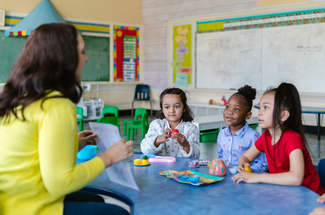|
A web search for information for educators about Autism took me to the webpage of the Organization for Autism Research (OAR). Their recommended resource for Educators is Life Journey Through Autism: An Educator’s Guide to Autism. I thought it might be informative to highlight the key issues so that the general public might understand the formidable task that teachers have. I will try to condense in a meaningful way their 6 steps to success.
1) EDUCATE YOURSELF In our cosmopolitan society, classrooms are already diverse, and now with the rising inclusion of students with ASD, managing these challenges in a general education setting will be increasingly complex. Success in this scenario is dependent on teachers educating themselves on autism. It is critical that teachers understand that inappropriate behaviours are more related to autism than to intentional disruptive or disrespectful acts. Education evolves as relationships develop with the student and family. Success depends on a open attitude to learning and working closely with parents and the school team, and your student of course. 2) REACH OUT TO PARENTS They are your best resource! It is imperative to establish methods and patterns of communication that are mutually agreed upon. Building trust and ongoing communication which includes positive feedback about accomplishments and milestones met is essential. 3) PREPARE THE CLASSROOM Teachers cannot always provide the ideal classroom setting but even a few modifications can make a big difference. 4) EDUCATE PEERS AND PROMOTE SOCIAL GOALS Teachers must promote the acceptance of a student with ASD as a full member and an integral part of the class. Encouraging positive interactions between students with ASD and his or her peers results in mutually enjoyable and lasting interpersonal relationships. If children have clear, accurate, and straightforward information about the disorder, they are increasingly likely to understand and accept. Outside the classroom setting, it is important to set up rotating groups of peer buddies to serve as role models, and to protect them against teasing and bullying. 5) COLLABORATE ON THE IMPLEMENTATION OF AN EDUCATIONAL PLANN (IEP) Teachers have an important role in the development, implementation and evaluation of the IEP which is the blueprint for all that is expected for the year. Reporting on meeting specific academic, social, and behavioural goals and providing input for developing new goals are tasked to the teacher. The IEP team consists of the special and general educational teachers, speech and language therapists, occupational therapists, school psychologist, and the family. 6) MANAGE BEHAVIOURAL CHALLENGES Behaviours such as meltdowns, running around the room, loud vocalizations, self injuries, and other disruptive behaviours, may be triggered for a variety of reasons. Deciphering the cause or function of a behaviour and observing patterning of the responses is a challenge. This process also involves reasonable alternatives to undesirable behaviour and reinforcement of these acceptable alternatives. PATIENCE, KINDNESS AND PROFESSIONALISM will make a big difference in the lives of students with ASD. Larger student classroom populations in some areas, inadequate wages, resources, and benefits for educators in many US States, and the added challenge of rising numbers of neurodiverse children compromise education as a whole for all of our children. Reach out when you can. Be Kind, Be Patient, and advocate for all children in less than optimal classroom situations. Government has a much bigger role to play here...don’t you think?
0 Comments
Leave a Reply. |

 RSS Feed
RSS Feed
